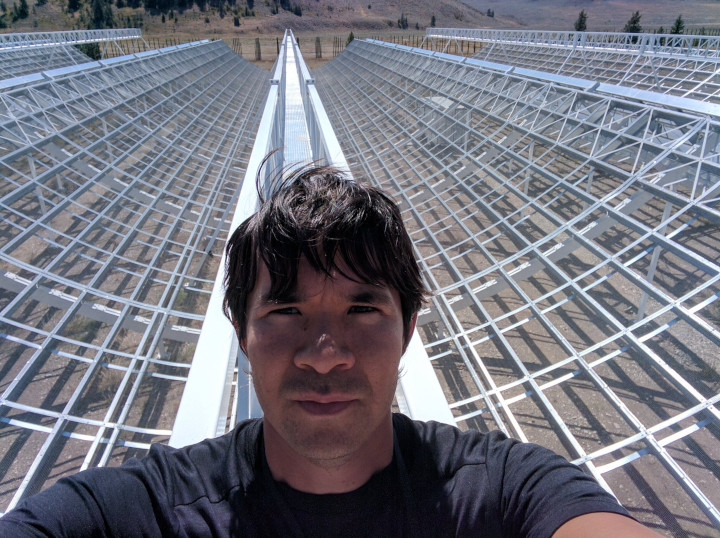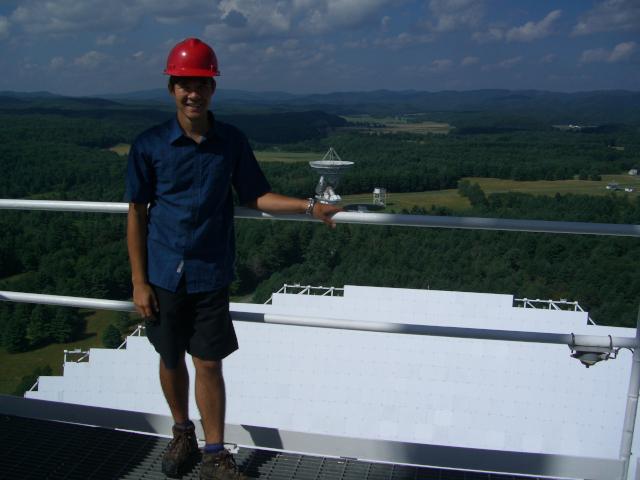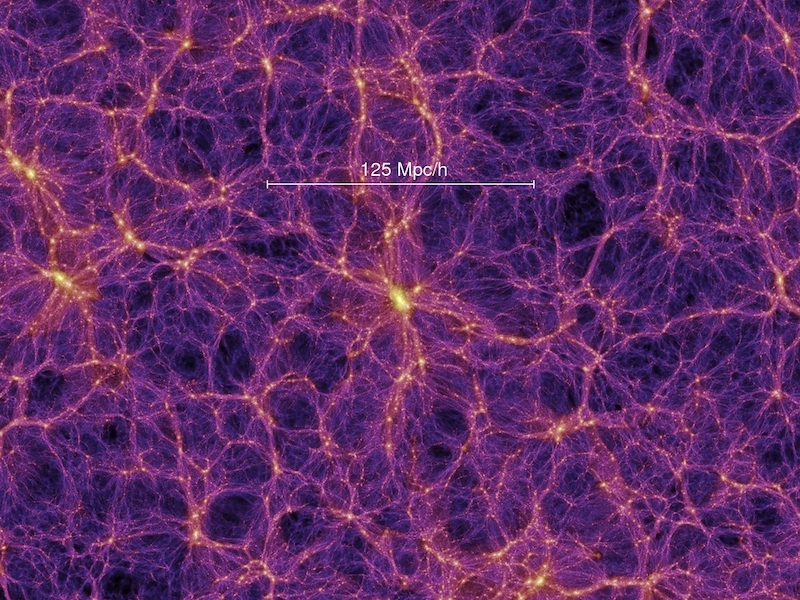Research
My lab works with wide-field, radio-wavelength sky surveys to establish new ways to observe the Universe. These include developing the technique of hydrogen intensity mapping for rapidly surveying large volumes of space, and exploiting the recently-discovered phenomena of fast radio bursts (FRBs) as probes of the Universe’s contents. This work includes creating digital instrumentation for radio telescopes, developing algorithms for analyzing observational data, and making theoretical predictions for the signals we should be looking for.

Hydrogen intensity mapping is a technique for rapidly surveying the large-scale distribution of matter in the Universe in three dimensions using radio emission from the 21-cm spectral line in hydrogen. Among the premier telescopes using this technique is the Canadian Hydrogen Intensity Mapping Experiment (CHIME), which is the main instrument used by Masui’s team. CHIME is part of a new generation of digital radio telescopes that have no moving parts and rely on signal processing software running on large compute clusters to focus and steer. This allows these telescopes to see large swaths of the sky simultaneously, enabling rapid surveys.
Fast radio bursts are brief and energetic flashes of radio light coming from distant galaxies. CHIME has been outfitted with a high-time-resolution backend dedicated to searching for FRBs, allowing it to detect these enigmatic transients at an unprecedented rate. Due to the unique properties of FRBs, they carry a record of the matter they've encountered between their source and our telescopes. Now, a central focus is to use the information contained in large samples of observed FRBs to help understand the evolution of the Universe.
More detail can be found at our lab page.
Past results
The Hydrogen intensity mapping survey with the GBT
 I
led
a survey
that pioneered the hydrogen intensity mapping technique, using the
Green Bank Telescope (GBT). The survey made a definitive detection of large-scale structure and
demonstrated that foregrounds can be subtracted down to the same level as the hydrogen signal.
The survey served as a proof-of-concept for the hydrogen mapping method and its potential
to rapidly advance observational cosmology.
I
led
a survey
that pioneered the hydrogen intensity mapping technique, using the
Green Bank Telescope (GBT). The survey made a definitive detection of large-scale structure and
demonstrated that foregrounds can be subtracted down to the same level as the hydrogen signal.
The survey served as a proof-of-concept for the hydrogen mapping method and its potential
to rapidly advance observational cosmology.
FRB 110523
The serendipitous discovery of a fast radio burst in the data from the GBT hydrogen mapping survey. The 15th FRB ever detected, and the second at a telescope other than Parkes, we were the first to measure linear polarization and Faraday rotation. We also detected the signatures of two distinct patches of turbulent gas along the line of sight, showing this was inconsistent with a Milky-way origin for FRBs and gaining some of the first clues about FRB source environments. The discovery was covered by National Geographic and Scientific American.
FRBs as probes of the structure of the universe
An early proposal for how a survey of FRBs might be used to probe the 3D distribution of matter in the Universe. The work was summarized in APS's Physics.
Primordial gravitational wave fossils
 I discovered a
tidal effect
by which primordial gravitational waves generated during inflation leave a subtle, but permanent, imprint in the large-scale
structure of the universe. The effect could be used to search for the existence of gravitational waves, probe their
3D structure, and confirm inflation.
I discovered a
tidal effect
by which primordial gravitational waves generated during inflation leave a subtle, but permanent, imprint in the large-scale
structure of the universe. The effect could be used to search for the existence of gravitational waves, probe their
3D structure, and confirm inflation.
Bitshuffle
I wrote a data compression software library and showed that for certain types of data, including that from radio telescopes, it is both faster and achieves better compression than other libraries.